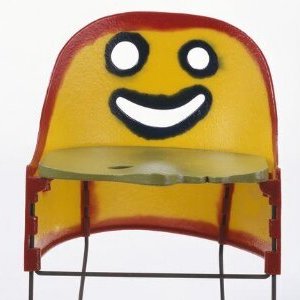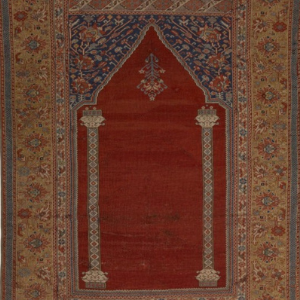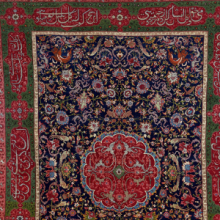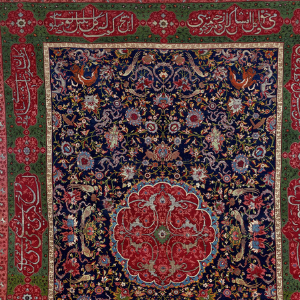Middle East

Ottoman Decree Regarding Protestants, 1850
This imperial decree, or firman, was translated from Ottoman Turkish to English by the American Board of Commissioners for Foreign Missions.

Victoria and Albert Museum
The video series How Was it Made? demonstrates a variety of craft methods: Japanese hikihaku obi, medieval stained glass windows, and book printing and binding.
Early Modern Ottoman Carpet at the Walters Art Museum
This carpet is a specific type of carpet woven in the Islamic world called a sajjadah or prayer rug.

Islamic Carpet made in Ottoman Turkey at The Metropolitan Museum of Art
This carpet is a specific type of carpet woven in the Islamic world called a sajjadah or prayer rug.

Islamic Carpet made in Safavid Iran
This carpet called the Qazvin Carpet (also known as the "Salting Carpet") was made in late-sixteenth century Safavid Iran likely in a royal atelier.

Short Teaching Module: Early Modern Islamic Carpets as Transcultural Objects
Islamic carpets were ubiquitous in the early modern period (1500-1800) in Europe as much as it was in the Islamic world. They were important objects of decor within homes, imperial palaces, and religious buildings.

Islamic Carpets
These three carpets made in the period between the 16th and 18th centuries show two distinct types of carpets produced in the Islamic World for particular culture-specific uses.

World History for Us All
Its units and lesson plans utilize a range of primary sources, which revolve around three themes are: Humans and the Environment, Humans and Other Humans, Humans and Ideas.
People with a History: An Online Guide to Lesbian, Gay, Bisexual, and Trans* History
In essence then this is an excellent site to find additional materials with some caveats: some links are now dead, in other ways this site is dated, and other parts – such as the section on images – are still empty. Still the materials that this site provides educators with great resources and